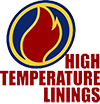Dear Chief Training Officer:
Bill Glover, President of High Temperature Linings, has been sitting on the NFPA Technical Committee on Fire Service Training for ten years. In his work with the committee, and in his participation as a member of design/construction teams on over one hundred new live fire training structures (burn buildings), he recognized that many in the fire service were using NFPA 1403, Standard on Live Fire Training Evolutions, as a stand-alone Standard Operating Procedure. In fact, NFPA 1403 is a broad standard that addresses many types of training, and different types of fire training structures and/or fire training props. It is imperative that Standard Operating Procedures be developed by each fire training center that applies NFPA 1403 to the particular structure, and to each burn room within the structure, that is being used by the fire department.
Further, it is apparent that most fire training academies are exercising too little control of fuel loads and numbers of evolutions conducted in permanent fire training towers, and that many in the fire service do not have an appreciation for the critical nature of the radiant energy that is developed as multiple successive fire evolutions are conducted. Many in the fire service believe that the installation of a permanent temperature monitoring system in the burn building allows training officers complete control in maintaining safe training environments. However, it is important to understand that a relative rise in temperature does not equate to the same relative increase in radiant energy produced. In fact, as temperatures increase, and as successive fires are conducted, the amount of radiant energy increases exponentially. To date, there is not an effective means of measuring the radiant energy produced in a live fire training structure. Further, permanently installed temperature monitoring systems are only relatively accurate in reporting actual gas temperatures that exist in different parts of a burn room.
Consequently, the NPFA Technical Committee on Fire Service Training has included language in the 2012 edition of NFPA 1403 that addresses this issue. The new standard requires that “burn sequence charts” be developed to define fuel loads and numbers of evolutions that can be safely conducted in each burn room of the live fire training structure. The standard includes the following language:
7.3.1 The AHJ shall develop and utilize a safe live fire training action plan when multiple sequential burn evolutions are to be conducted per day in each burn room.
7.3.2 A burn sequence matrix chart shall be developed for the burn rooms in a live fire training structure.
7.3.2.1 The burn sequence matrix chart shall include the maximum fuel loading per evolution and maximum number of sequential live fire evolutions that can be conducted per day in each burn room.
7.3.3* The burn sequence for each room shall define the maximum fuel load that can be used for the first burn and each successive burn.
7.3.4* The burn sequence matrix for each room shall also specify the maximum number of evolutions that can be safely conducted during a given training period before the room is allowed to cool.
7.3.5 The fuel loads per evolution and the maximum number of sequential evolutions in each burn room shall not be exceeded under any circumstances.
High Temperature Linings encourages our customers to immediately take a pro-active role by taking the following steps:
- Understand the difference between temperature and radiant energy.
- Understand that you can create environments in permanent live fire training structures that are a threat to your turn out gear and your safety. Remember, a permanent live fire training structure is designed to withstand thousands of live fire training evolutions without seriously affecting the integrity of the structure. Consequently, if you are not planning and controlling your evolutions, the environments created could be worse than those encountered in actual structure fires. Quite simply, many structures would collapse under the same conditions.
- Develop Standard Operating Procedures that apply NFPA 1403 to the particular structure that you use for your fire training. We are attaching a sample of what that SOP might look like. Of course, you must develop SOPs that apply to your specific structure. The attachment is intended to simply offer ideas.
We hope this information is useful to you, and we strongly encourage you to contact us with comments and/or recommendations.
Thanks, and please be safe!

